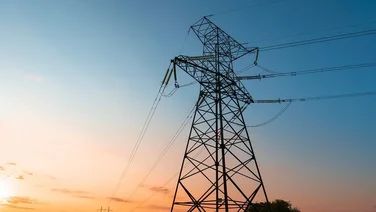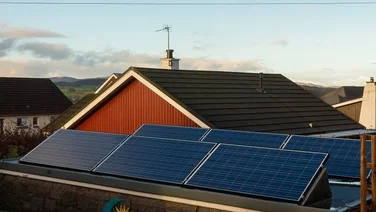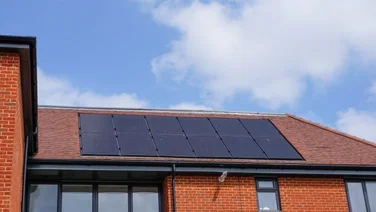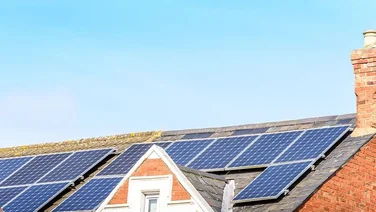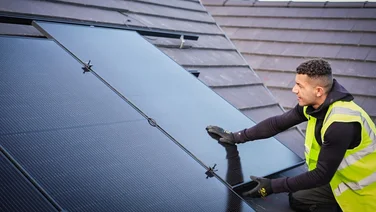- What are hybrid solar panels?
- How do hybrid solar panels work?
- What are the benefits of hybrid solar panels?
- How much do hybrid solar panels cost?
- Is your home suitable for hybrid solar panels?
- How many hybrid solar panels do you need?
- How are hybrid solar panels installed?
- Do you need planning permission for hybrid solar panels?
- Are hybrid solar panels worth it?
- Hybrid solar panels use the sun’s light and warmth to create electricity and heat
- They can generate over 3x more electricity and heat than regular solar panels
- Like any kind of solar panel, hybrid solar panels are a long term investment

Hybrid solar panels, also known as solar PV-T, are one of many different types of solar panels available.
They have evolved enormously in recent years. Using a combination of the sun’s light and warmth, they now offer a green, cost-effective way to power and heat your home.
However, it’s still a niche product, and what’s on offer is changing all the time.
Here is our guide to what you can expect and what to look for, when you’re considering installing hybrid solar panels in your home.
Where do you want to install solar panels?
Get startedWhat are hybrid solar panels?
A hybrid solar panel is a combination panel that can produce electricity and heat at the same time. They’re also known as solar PV-T, or solar photovoltaic-thermal panels, meaning they take both energy and heat from the sun.
What that means for us, is that we can use one panel to generate electricity as well as heat and hot water.
One thing to flag: google ‘hybrid solar panels’ and it will soon become clear that the term is often used interchangeably with ‘hybrid solar systems’.
However, these are two different things. It’s confusing, but hybrid solar systems refer to a solar system that is still connected to the national electric grid, allowing for back up in emergencies.
How do hybrid solar panels work?
When sunlight is absorbed by a hybrid solar panel it is able to make use of two elements: heat and light.
Solar PV-T panels are able to do this because they are made up of two components: a photovoltaic element, designed to absorb light, and a solar thermal component, designed to capture the sun’s heat.
Aside from their dual role, hybrid solar panels also have the added benefit of increasing electrical output and making it more efficient.
This is because solar panels can actually become less efficient in high temperatures, and placing the thermal, or water, element next to the solar panel works to cool it down.
This is an area of rapid development, so improvements are being made all the time, but research published in 2021 found that power output increased by 19% and efficiency improved by 17%.
Where do you want to install solar panels?
Get startedWhat are the benefits of hybrid solar panels?
- Increased output efficiency
- Space saving – only one panel is required to do two jobs
- Low maintenance
- Extended life span compared to solar panels
- Can be used in both commercial and residential settings
- Lower environmental impact
The most obvious benefit from pairing solar photovoltaic and solar thermal technology is the space saving. Many people install photovoltaic panels and solar thermal panels separately, whereas having a hybrid means you only need one panel, which is great if you have a limited amount of roof space.
On a more sophisticated level, and as mentioned above, combining photovoltaic and thermal elements together leads to greater conversion efficiency and increased efficiency of output – resulting in four times more energy and heat than a solar panel system of a comparable size.
And an additional benefit to cooling the solar panel is that it is likely to help it last longer.
Like all solar panels, hybrid solar panels are a long-term investment, and it can take some time before you break even.
Additionally, less sunlight in winter means that the solar thermal element won’t be able to answer all your heating needs during that period, and you’ll need an additional energy source, such as a boiler.

How much do hybrid solar panels cost?
Property size | Two-bedroom house | Three-bedroom house | Four-bedroom house |
|---|---|---|---|
Annual electricity usage | 1,800 kWh | 2,900 kWh | 4,300 kWh |
Estimated number of hybrid solar panels* | 2 | 3 | 4 |
Estimated hybrid solar panel cost** | £3,144 | £4,716 | £6,288 |
* Please note that the number and cost of panels needed will vary depending on the type and manufacture of hybrid solar panels used. The number of panels and estimated costs are based on Abora Solar’s claim of its panels being four times more effective, and general industry reflections that hybrid solar panels are twice the cost of solar panels. Due to the complexity of elements involved in quoting for the panels, they are not based on the manufacturers’ advertised costs, which may well be higher.
** These prices are based on Microgeneration Certification Scheme (MCS) cost data (March 2023), the average price of electricity (July-September 2023), and Ofgem’s latest typical domestic consumption values (2021). Total costs may increase with more complex installations. The above estimates do not include the cost of a solar battery.
Generally speaking, hybrid solar panels are double the price of regular solar panels. This is based on the fact that it’s still a relatively niche product, and there is still a lot of variability in costs, dependent on the model you’re using.
Another issue is that installation is quite a niche skill, so you may need to factor in travel costs for your installer into the overall price.
Do hybrid solar panels help save you money on energy bills?
Hybrid solar panels are a relatively new and niche form of solar panel, and there hasn’t been a great deal of research into how much money they can actually save you.
Having said that, based on the premise that solar panels are estimated to reduce your energy bills by 70%, and bearing in mind that solar PV-T panels are believed to be up to four times more effective, as outlined above, that saving should only increase.
The hybrid solar panels increased efficiency means you should also need fewer panels.
The other thing to factor in is heating: in colder climates, like Europe, an estimated 52 percent of energy spend goes on heating. While solar thermal heating won’t be able to meet all of your demand in winter, it will bring additional savings.
Is your home suitable for hybrid solar panels?
The main consideration that homeowners usually have about installing hybrid solar panels is roof space: and, if you are looking for both energy and heating, then hybrid solar panels are a great way to fit two panels in one.
At this stage it’s natural to ask ‘how heavy are solar panels?‘ Another factor to consider is panel weight. Some hybrid panels can weigh up to 35 kilograms (compared to the average weight of a solar panel, which is 18 kilograms). So you will need to check both the strength of your roof before you proceed.
Some factors remain the same as other solar panels, though: south-facing roofs are best, and, ideally, you angle your panels at around 35-45 degrees. You also want to avoid too much shade.
For more general information see our Complete Guide to Solar Panels For Your Home.
How many hybrid solar panels do you need?
The calculation as to how many hybrid solar panels you will need is the same as it would be for solar panels:
- Work out how much energy you use per year by looking at your monthly electricity bill
- Determine the kilowatt-hour (kWh) that your hybrid solar panel will produce (this very much depends on the make of the panel)
- Divide your annual energy use by panel kWh
- Cross check this against the space available on your roof, and the direction your roof faces to check your previous calculation is genuinely representative
We also recommend that you check with the panel manufacturer that your calculations are likely to be correct. And if in doubt – over estimate your annual energy use.
How are hybrid solar panels installed?
As with solar panels, solar PV-T panels can either sit on your roof or be integrated within it.
The positioning, and ease of installation. depends on which brand of solar PV-T panels you’re using. At their best, the panels are sleek and small, and fit easily into smaller roof spaces.
However, many solar PV-T panels are more complex to install than normal solar panels or solar thermal panels, and so it’s recommended that you use a specialist installer.
And, since this is a relatively new technology, finding a specialist can be more challenging.
Use our guide to find the best solar panel installers.
Do you need planning permission for hybrid solar panels?
Generally, solar PV-T panels fall into the same category as regular solar panels, and are viewed as ‘permitted development’, which means planning permission isn’t needed.
There are exceptions, however. If your house is a listed building, you live in a conservation area or a wildlife protected area, you may need to seek permission.
If you think you may fit into any of these categories, we recommend you check with your local council’s planning department before installing.
Are hybrid solar panels worth it?
Hybrid solar panels can be a great way to both cut your carbon footprint, and cut energy and heating costs. There are clear advantages to hybrid solar panels over purely solar or solar thermal panels.
However, they are currently a niche product, so there’s lots of variety – and it’s harder to generalise how to find the right type for you. Also, depending on the model available to you, they can be relatively expensive and more challenging to install.
And, like solar panels, they’re a long term-investment.
Where do you want to install solar panels?
Get started

